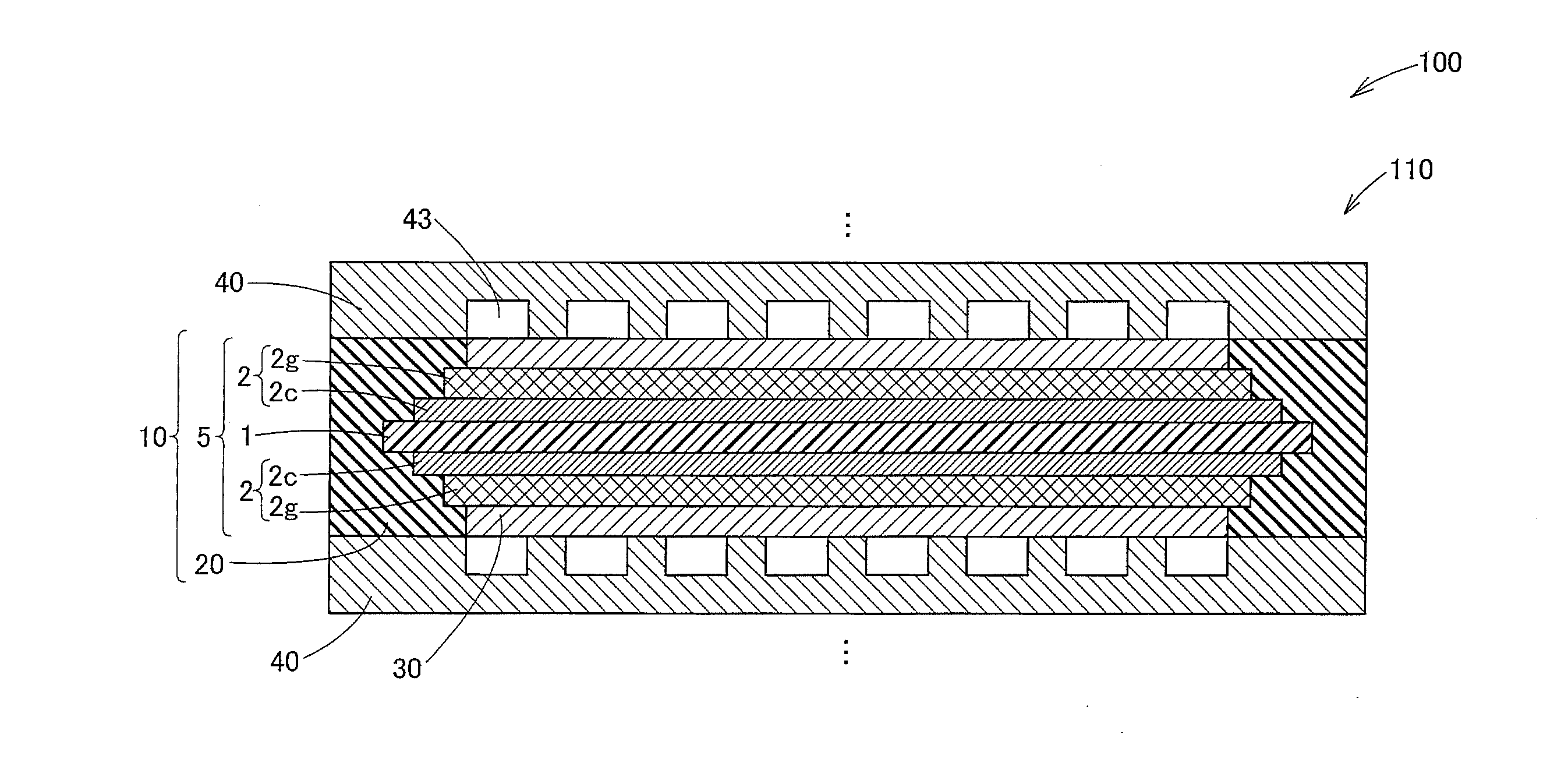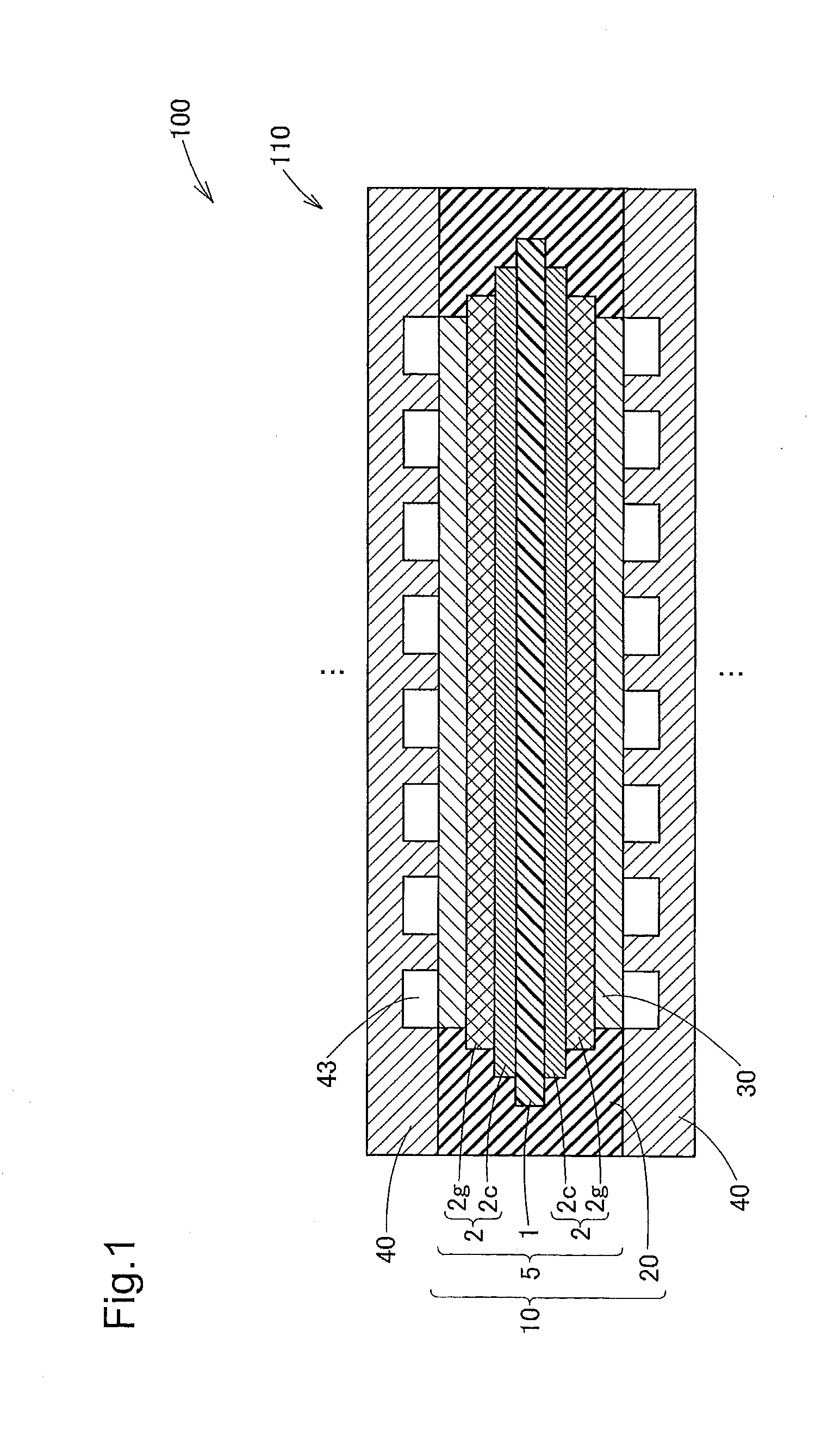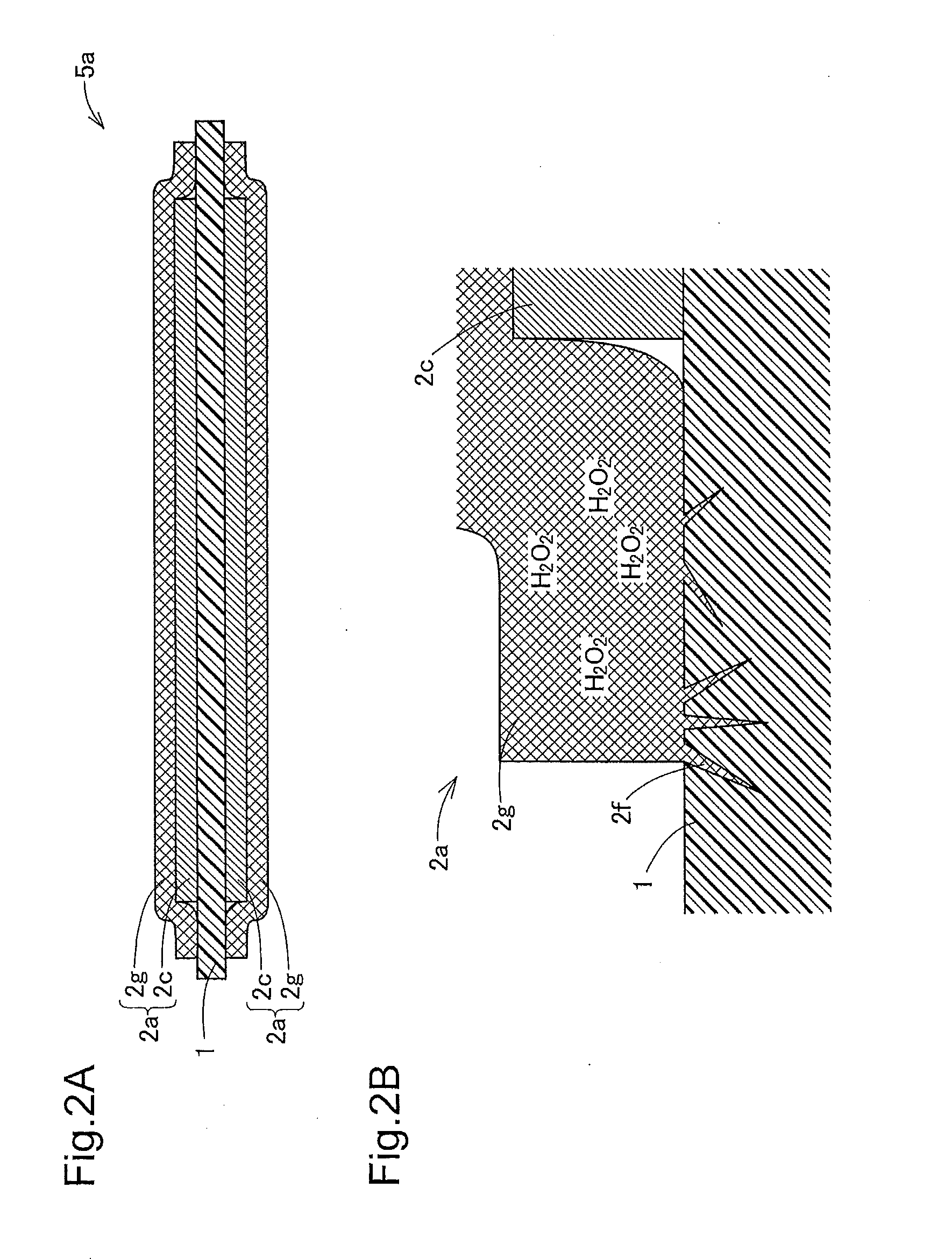Membrane electrode assembly, fuel cell using the same and manufacturing method of membrane electrode assembly
- Summary
- Abstract
- Description
- Claims
- Application Information
AI Technical Summary
Benefits of technology
Problems solved by technology
Method used
Image
Examples
first embodiment
A. First Embodiment
[0069]FIG. 1 is a schematic diagram illustrating the structure of a fuel cell according to one embodiment of the invention. This fuel cell 100 is provided as a polymer electrolyte fuel cell that generates electricity with received supplies of hydrogen and oxygen as reactive gases. The fuel cell 100 has the stack structure by stacking a plurality of unit cells 110 one upon another. The unit cell 100 has a seal-integrated membrane electrode assembly 10 and two separators 40 that are placed across the seal-integrated membrane electrode assembly 10.
[0070]The seal-integrated membrane electrode assembly 10 includes a membrane electrode assembly 5 and a seal member 20 placed at the outer peripheral edge of the membrane electrode assembly 5. The membrane electrode assembly 5 is provided as a power generation device where electrodes 2 having gas diffusivity are integrated with and arranged on both sides of an electrolyte membrane 1 having good proton conductivity in the we...
second embodiment
B. Second Embodiment
[0090]FIG. 5 is a schematic diagram illustrating the structure of a fuel cell 100A according to a second embodiment of the invention. The structure of FIG. 5 is substantially similar to the structure of FIG. 1, except the difference in structure of electrodes 2A. In a membrane electrode assembly 5A of this fuel cell 100A, the outer peripheral edge of a gas diffusion layer 2g is formed to have an inclined face that is substantially tapered toward a catalyst layer 2c-side. In other words, the end face of the gas diffusion layer 2g is arranged to form an acute angle with the surface of the gas diffusion layer 2g on the catalyst 2c-side. A water-repellent layer 3 is provided on the outer surface of the gas diffusion layer 2g. The water-repellent layer 3 covers the catalyst 2c-side surface of the gas diffusion layer 2g and part of the outer peripheral edge of the gas diffusion layer 2g.
[0091]FIGS. 6A to 6F are diagrams sequentially illustrating a process of forming t...
third embodiment
C. Third Embodiment
[0102]FIG. 9 is a schematic diagram illustrating the structure of a fuel cell 100B according to a third embodiment of the invention. The structure of FIG. 9 is substantially similar to the structure of FIG. 5, except that an electrode 2B having an outer peripheral edge of different structure from that of the electrode 2A is formed on one face of a membrane electrode assembly 5B. In the electrode 2B formed on one face of the membrane electrode assembly 5B, a catalyst layer 2c, a gas diffusion layer 2g and a water-repellent layer 3 are formed in substantially the same size as that of an electrolyte membrane 1. The electrolyte membrane 1, the catalyst layer 2c, the water-repellent layer 3 and the gas diffusion layer 2g are accordingly stacked one upon the other to have the respective end faces substantially aligned. In this fuel cell 100, oxygen and hydrogen are supplied to the electrode 2A serving as the cathode and the electrode 2B serving as the anode. The water-r...
PUM
 Login to View More
Login to View More Abstract
Description
Claims
Application Information
 Login to View More
Login to View More - R&D
- Intellectual Property
- Life Sciences
- Materials
- Tech Scout
- Unparalleled Data Quality
- Higher Quality Content
- 60% Fewer Hallucinations
Browse by: Latest US Patents, China's latest patents, Technical Efficacy Thesaurus, Application Domain, Technology Topic, Popular Technical Reports.
© 2025 PatSnap. All rights reserved.Legal|Privacy policy|Modern Slavery Act Transparency Statement|Sitemap|About US| Contact US: help@patsnap.com



